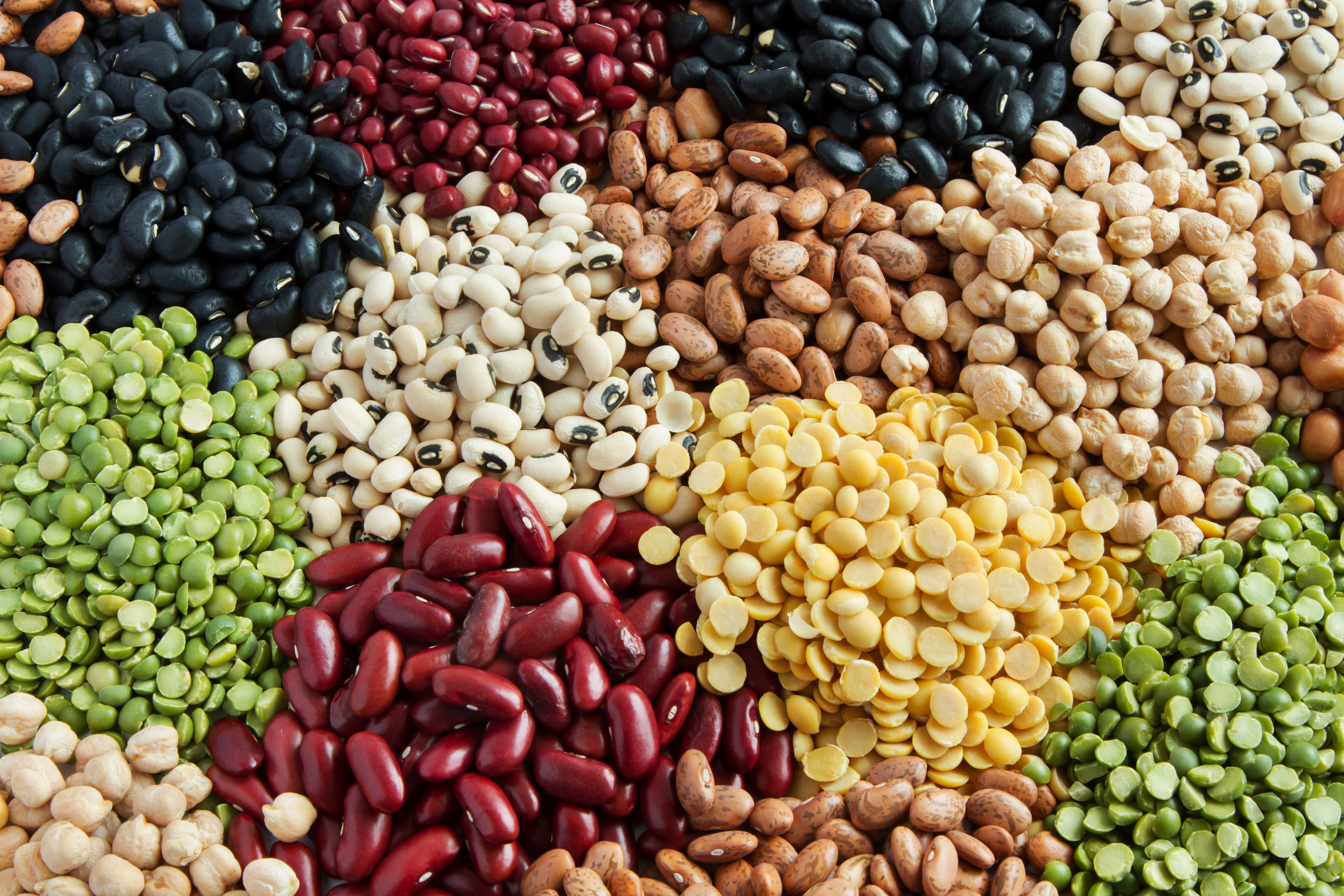
If improving your well-being in 2025 is on your agenda, adding more beans and lentils to your diet should definitely be part of your plan. These powerhouses contain essential nutrients including fiber, protein, iron, and magnesium, making them some of the most nutrient-dense and adaptable options available. Despite this, beans and lentils frequently get passed over at grocery stores. Perhaps it’s due to their canned form or past reputation from the '90s when they were dubbed "the musical fruit," but regardless, these small nutritional gems have remained relatively unnoticed compared to trendy superfoods like kale, chia seeds, and cauliflower which have gained significant attention during recent years.
It seems that beans will finally receive the recognition they deserve in 2025. Early last month, the 2025 Dietary Guidelines Advisory Committee released their scientific report. was released, with recommendations For modifications to nutritional recommendations, which include consuming greater quantities of beans and lentils. The committee mentioned this in their report, stating that 83% of individuals do not meet the suggested intake of 1 to 4 cups. of prepared beans, peas, and lentils daily.
With National Bean Day As we head toward January 6th, now is an excellent moment to start incorporating beans and lentils into your diet. Here’s why you should make these legumes a regular part of your grocery list:
Health benefits of beans
Beans and lentils provide a wide array of nutrients such as protein, fiber, iron, calcium, magnesium, phosphorus, folate, zinc, and selenium; however, their precise nutritional profile differs depending on the variety. These legumes boast negligible amounts of saturated fats and possess only trace levels of sodium with a low glycemic index value.
Studies show that consuming beans is linked to numerous health advantages, such as:
-
Heart health: Eating beans could assist in reducing LDL (bad) cholesterol levels and safeguard against cardiovascular diseases.
-
Colorectal cancer prevention: Consuming beans could contribute to preventing colorectal cancer.
-
Blood glucose control: Even though they contain carbohydrates, consuming beans can aid in protecting against diabetes and help manage blood sugar levels.
-
Weight management: Individuals who consume beans frequently are likely to have lower weights and more favorable waist-to-hip ratios when compared to those who refrain from eating them.
-
Better diet quality: People who eat beans often end up having higher diet quality scores while consuming higher amounts of fiber, iron, calcium, and potassium compared to those who do not.
Top bean varieties and ways to savor them
From black beans to chickpeas, each bean variety comes with subtle differences in nutrient composition and taste. Arguably, the best beans are the ones you enjoy and are most motivated to eat, but here are five options that offer a particularly impressive range of nutrients:
Lentils: A half-cup serving of cooked lentils offers 8 grams of fiber, 9 grams of protein, along with various essential minerals such as B vitamins, iron, magnesium, phosphorus, copper, and manganese.
How to enjoy them: Lentils can be incorporated into salads and soups, serve as a foundation for curries, turned into burgers, and utilized as a replacement for meat in Bolognese sauce.
Black beans: A half-cup serving of canned black beans provides 6 grams each of both fiber and protein, along with several essential minerals including iron, magnesium, manganese, folate, and thiamine.
How to enjoy them: Dark beans are incredibly adaptable and can be included in salads, incorporated into taco bowls, blended into baked items, shaped into burgers, or enclosed within quesadillas.
Cannellini beans: A half-cup serving of canned cannellini beans offers 5 grams of fiber, 6 grams of protein, and meets 15 percent of the recommended daily intake for iron.
How to enjoy them: Cannellini beans are excellent additions to soups such as minestrone and pasta fagioli since they maintain their form during cooking. Additionally, these beans can be blended in a food processor with olive oil, lemon juice, garlic, and herbs to create a dip that serves as a substitute for hummus.
Chickpeas: A single half-cup serving provides 6g of fiber and 7.5g of protein and is a good source of iron, magnesium, phosphorus, folate, copper and manganese.
How to enjoy them: Canned chickpeas are incredibly versatile and can be tossed onto a salad, mashed and added to a sandwich, whipped up into hummus in the food processor or even roasted and drizzled with chocolate for a sweet treat.
Edamame: Edamame stands out as a highly protein-dense food with 11 grams of protein per half cup. Additionally, they provide 4 grams of fiber along with over 10% of the daily suggested intake for nutrients such as folate, vitamin K, iron, magnesium, and phosphorus within the same portion size. These beans also include isoflavones, which are plant compounds that might assist in reducing certain health issues. menopausal symptoms such as night sweats and hot flashes .
How to enjoy them: Edamame can be enjoyed as a high-protein snack all by themselves, added to a stir-fry, or placed atop a rice bowl. Owing to their robust nature compared to many other beans, they serve well as an alternative to animal proteins in various dishes.
What criteria should you consider when selecting beans?
Eager to consume additional beans? Whether dried, canned, or frozen, they can each serve as nutritious choices. Seek out items that do not include extra sauces or sodium. When opting for canned varieties, ensure the packaging indicates "BPA-free." BPA (bisphenol A), a known endocrine disruptor, has raised health concerns. associated with numerous health problems . Most cans no longer include BPA; still, it’s wise to verify just to be sure.
Peas and pulses are often overlooked but provide an economical and flexible means of obtaining essential nutrients. These foods contain a wide range of lesser-known vitamins like fiber, iron, calcium, and potassium. Regular consumption of these items has also been associated with numerous positive health outcomes.


Post a Comment